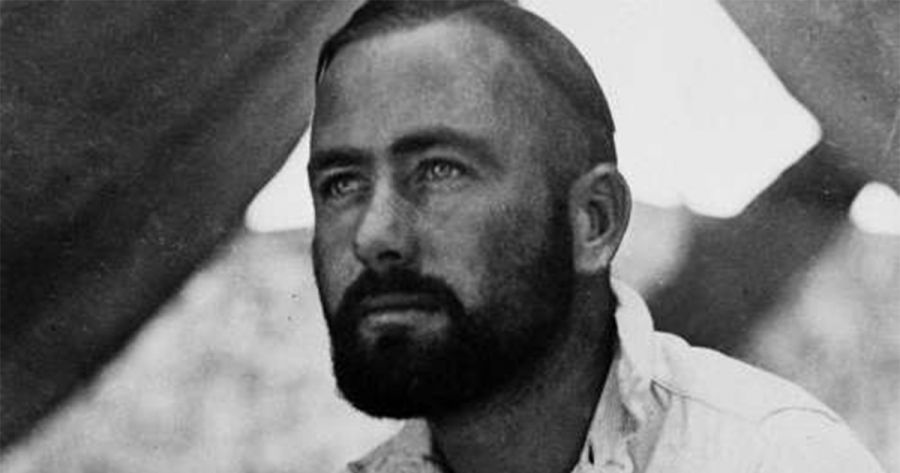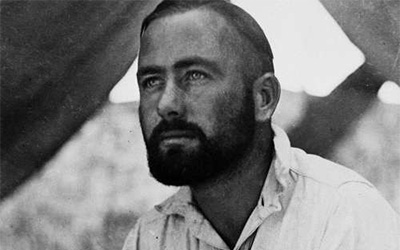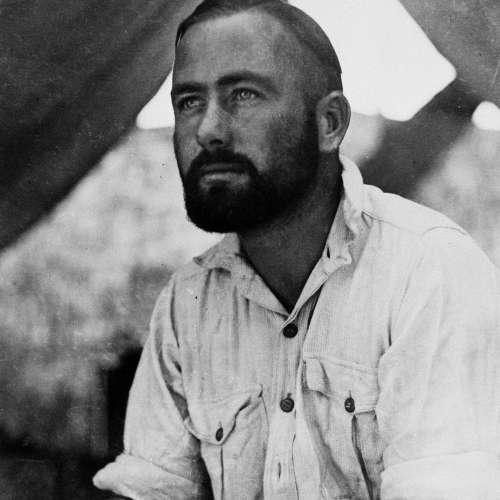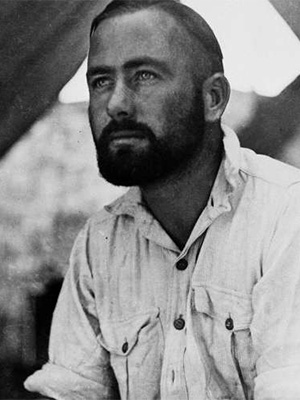
- Free Article: No
- Contents Category: Commentary
- Custom Article Title: The Great Australian Denial: W.E.H. Stanner on mourning and disremembering
- Review Article: No
- Article Title: The Great Australian Denial
- Article Subtitle: W.E.H. Stanner on mourning and disremembering
- Online Only: No
- Custom Highlight Text:
W.E.H. Stanner’s coinage ‘the great Australian silence’ must be one of the best known in Australia’s modern history. It must also rank alongside Donald Horne’s ‘the lucky country’ as one of the least understood.
There is nothing remarkable about this phenomenon. The way a text is received by readers and listeners is seldom in keeping with its creator’s purpose or intention. This is so for several reasons. Most importantly perhaps, any text is open to being read in multiple ways, and in the case of canonical texts like Stanner’s that reception is usually fundamental to its impact.
- Featured Image (400px * 250px):

- Alt Tag (Featured Image): ‘The Great Australian Denial: W.E.H. Stanner on mourning and disremembering’ by Bain Attwood
Given this misunderstanding, it is worth reminding ourselves what a metaphor is. The Oxford English Dictionary provides two definitions: ‘A figure of speech in which a name or descriptive word or phrase is transferred to an object or action different from, but analogous to, that to which it is literally applicable’; and ‘something regarded as representative or suggestive of something else, esp. as a material emblem of an abstract quality, condition, notion, etc.’ (my emphases). In Stanner’s ‘silence’, the action he had in mind was ‘forgetting’ or what he more often called ‘disremembering’, that is, a failing to remember, while the ‘something else’ was akin to ‘silence’ but nonetheless different from it: not a history that was never or even seldom told but a history that was unexamined.
 W.E.H. Stanner (courtesy of Black Inc)
W.E.H. Stanner (courtesy of Black Inc)
What Stanner was seeking to draw attention to was not a matter of white Australians not knowing about the country’s Black past but rather a matter of their not being willing and able to keep in mind what they otherwise knew. In a key passage in his 1968 Boyer Lectures, Stanner spoke of ‘the other side of a story over which the great Australian silence reigns; the story of the things we [white Australians] were unconsciously resolved not to discuss with [black Australians] or treat with them about; the story, in short, of the unacknowledged relations between two racial groups within a single field of life’ (my emphases). Stanner’s choice of words here as well as his use of words such as ‘unconscious’ and ‘screen’ suggest that he was familiar with Freud’s writings about forgetting and remembering.
The phenomenon Stanner was discussing was one Freud would have called denial or disavowal, a state of mind that refers to statements or actions that are unconsciously uttered or performed by anyone who has a need to be innocent of some troubling fact or aspect of reality, and so turns a blind eye to what they actually know. Unlike repression, this psychological mechanism does not comprise an absence, distortion or erasure of an actual perception of something. Instead, it involves an unwillingness and an inability to accept the implications of what someone has actually perceived. Paradoxically, Freud observed, an individual or a community both knows and does not know – or knows yet is unwilling and thus unable to acknowledge what they know.
Some of Stanner’s other writings provide further evidence that he had such a psychological force in mind in coining ‘the great Australian silence’ in the second of his Boyer Lectures. In a talk he gave in 1972, he drew attention to a passage he had rediscovered in a 1939 memoir. ‘We are still afraid of our own past,’ its author had written. ‘The Aborigines we do not like to talk about. We took their land … it [was] not a fair deal. Anyhow, nobody ever heard them complain about it.’ This led Stanner to declare: ‘[Those] words … summed up in advance the substantial thesis of my Boyer Lectures of 1968: our unwillingness to contemplate some of the truths of our past, our aversion from some of the facts of the present; and the continuing unfairness of some aspects of our treatment of the Aboriginal people’ (my emphases).
Few historians seem to have understood the historical dimension of Stanner’s thought. As I have said, he was not a historian. He did not share that discipline’s preoccupation with the past per se (as the passage I quoted last in the previous paragraph illustrates). He was primarily concerned with the way a basic or fundamental structure of relations between white and black – which he believed had formed early in Australia’s past – had been disremembered over time by non-Indigenous Australians and so weighed heavily on ‘the continuing anatomy of Australian life’. In talking about ‘forgetting’ and ‘disremembering’ Stanner was, like a psychoanalyst, concerned with recovering the presence of this past and trying to diminish its burden by telling stories about it. Freud would have called this remembering, mourning, and working through.
In formulating ‘the great Australian silence’ , Stanner was concerned with the contemporary structure of racial relations, how this had been figured in the dominant stories that had been told about the Australian nation, and the consequences of that storytelling for national life. He argued that the nation’s white storytellers were so ‘ethnocentric’ – by which he largely meant that they were narcissistic – that they had not only disremembered their own people’s relationship with the country’s first peoples but barely represented Aboriginal perspectives of those relations.
Stanner, knowing how different those perspectives were, pointed out that the histories that Aboriginal people told ‘would have to be a world – perhaps I should say an underworld – away from the conventional histories of the coming and development of British civilization’, and observed that they had ‘a directness and a candour which cut like a knife through most of what we [white Australians] say and write’. He called for these histories to be included in ‘the sweep of [the Australian] story’.
Stanner gave an example of these Aboriginal histories in a long passage that encapsulates his argument:
All land in Australia is held in consequence of an assumption so large, grand and remote from actuality that it had best be called royal, which is exactly what it was. The continent at occupation was held to be disposable because it was assumed to be ‘waste and desert’. The truth was that identifiable Aboriginal groups held identifiable parcels of land by unbroken occupancy from a time beyond which, quite literally, ‘the memory of man runneth not to the contrary’ … There are still some parts of Australia … to which their titles could be demonstrated, in my opinion, beyond cavil … In such areas if the Crown title were paraded by, and if the Aborigines understood what was happening, every child would say, like the child in the fairy-tale, ‘but the Emperor is naked’ … [T]he fact is one of the barely acknowledged elements of the real structure of Australia which is working its way towards a more overt expression. Like many another fact overlooked, or forgotten, or reduced to an anachronism, and thus consigned to the supposedly inconsequential past, it requires only a suitable set of conditions to come to the surface, and be very consequential indeed (my emphasis).
Stanner believed that such a set of conditions were emerging: ‘I hardly think that what I have called “the great Australian silence” will survive the research that is now in course.’ His optimism, which was only momentary, rested on what he saw as the bringing together of the historical and the contemporary dimensions of Australia’s racial structure. Yet, as Stanner had argued, it was one thing for white Australians to acquire knowledge about that structure, quite another thing to be willing and able to care about it in such a way that they actually remember what they know.
There has undoubtedly been an enormous growth in white Australia’s remembering of Australia’s Black history since Stanner coined ‘the great Australian silence’, but the contemporary problem he was trying to pinpoint about the structure of our racial relations has remained. While there is now much more willingness among non-Indigenous Australians to learn about the truth of this country’s Black history, a good deal of the historical writing has tended to disconnect the past and the present and thus dismember the presence of that past, not least when it has told stories about the mass of killings that occurred on colonial frontiers in a way that draws attention away from the process of dispossession, which has had much more lasting consequences for Aboriginal people.
To make matters worse, not only has most non-Indigenous Australians’ understanding of the relationship between the historical (or past) dimensions and the contemporary (or present) dimensions of the plight of many Aboriginal people remained weak, but the connection between the politics of recognition and the politics of redistribution has been severely weakened. Too little of the current discourse about the need for truth-telling broaches these twin problems, let alone considers how they might be addressed and what role history might play.
This is one of a series of ABR articles being funded by Copyright Agency’s Cultural Fund.



Comments powered by CComment